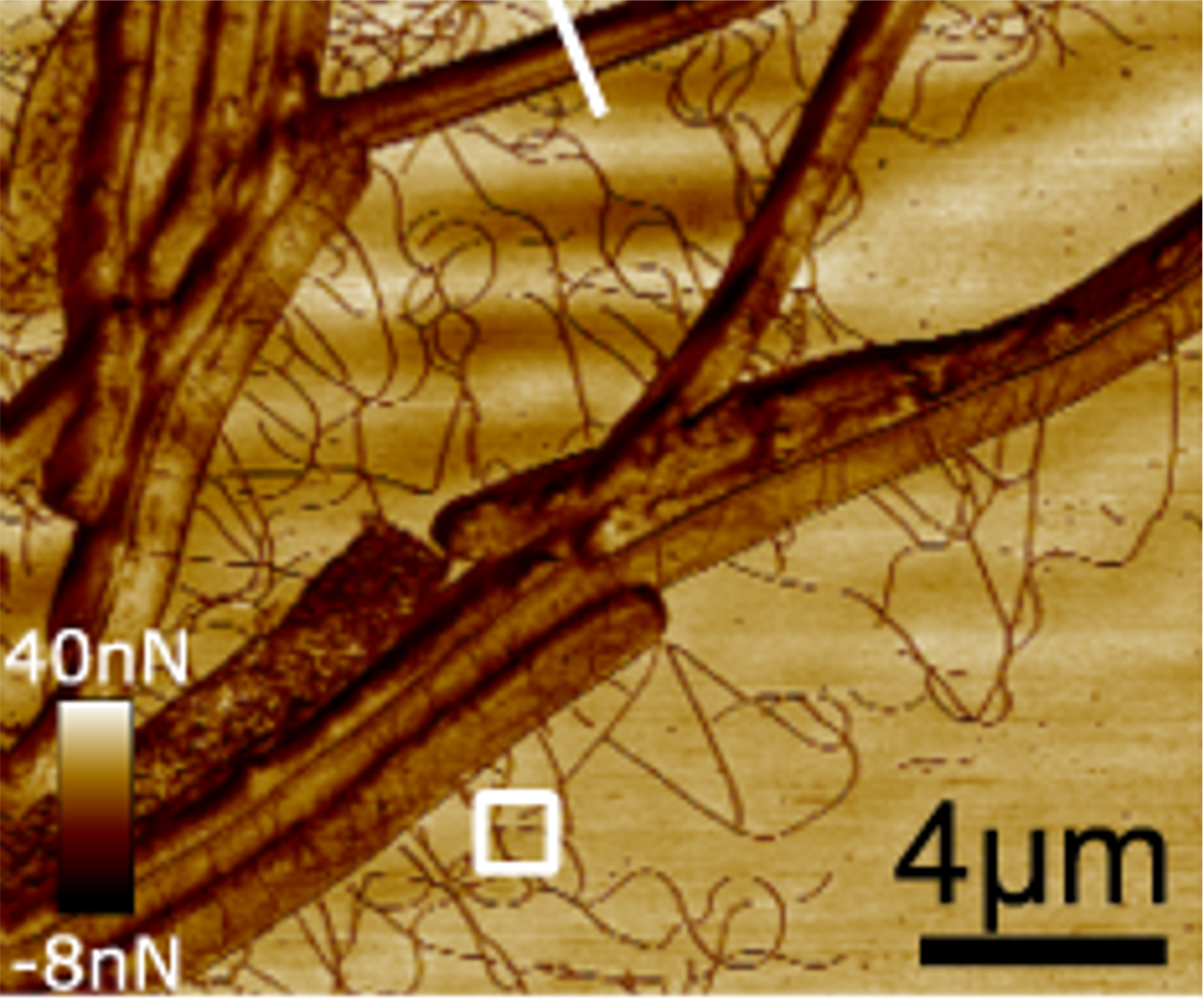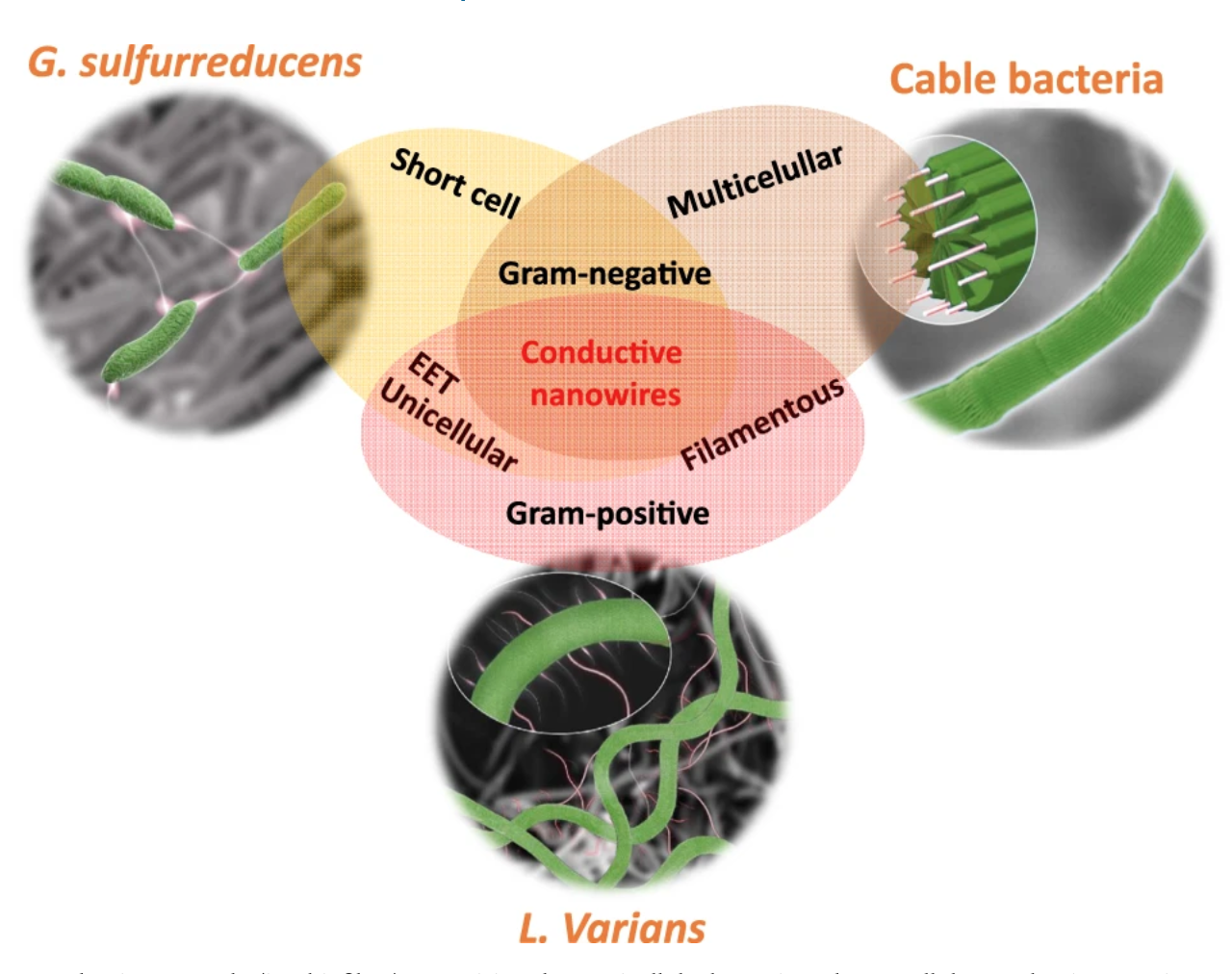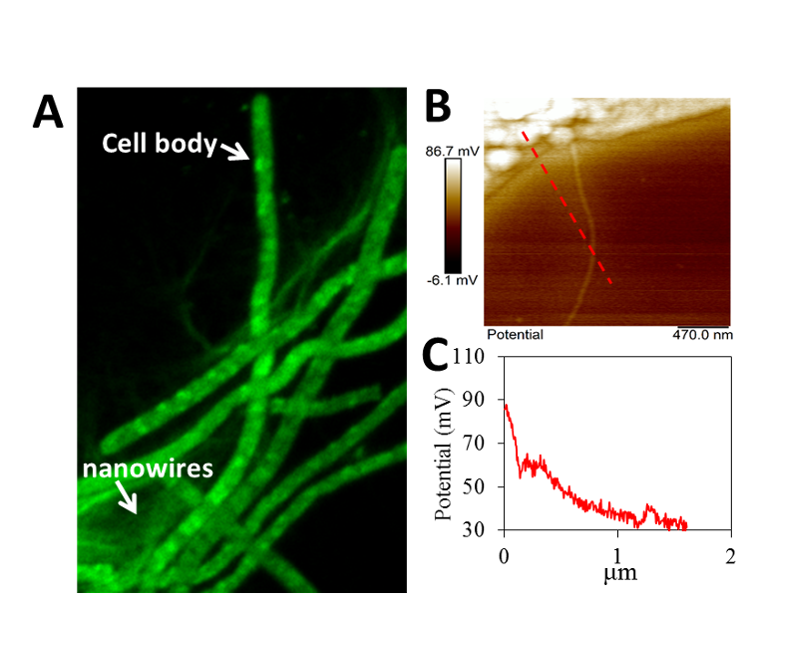Filamentous Gram-positive bacterium for long-distance electron
Increasing evidence has demonstrated how the microbial world is electrically connected. Electrical wire networks on the micrometer to centimeter scale have been found in many microorganisms and in diverse environments, where they are believed to play important roles in biogeochemical processes, pollutant degradation and bioenergy recovery. iNANO researchers report of another strategy for long-distance transfer of electrons.



In electromicrobiology, bacterial long-distance electron transfer (LDET) is an important process that enables bacteria to electrically bridge spatially separated chemicals, bacterial cells, and environments at scales from tens of micrometers to centimeters. To date, bacterial LDET has only been reported based on Gram-negative model bacteria including Geobacter, Shewanella and Cable bacteria. However, Gram-positive bacteria, as an essential and ubiquitous member of the microbial world, were still missing in these electrical networks. It seemed that they were excluded from this valuable function due to their thick and nonconductive cell walls.
Recently, an international research team including Interdisciplinary Nanoscience Center and Center for Electromicrobiology, Aarhus University, Denmark, Institute of Microbiology, Guangdong Academy of Sciences, China, and Hasselt University, Diepenbeek, Belgium showed evidence that Gram-positive bacteria can also be key knots in the electrical networks.
The team found that Lysinibacillus varians, a Gram-positive bacterium isolated from river sediment, can form centimeter-scale and conductive cellular networks when transferring electrons to graphite electrodes in microbial electrochemical systems. Respiring on electrodes, L. varians cells can grow to a length of one millimeter, and in the network L. varians can generate micrometer-long conductive nanowires connecting to each other and forming a secondary, conductive, network while the filamentous cells form nonconductive frames.
Previous reports have shown two types of microbial electrical networks, one comprises short cells with extracellular conductive nanowires (e.g. Geobacter biofilms) and the other comprises filamentous cells with conductive envelopes (e.g. cable bacteria networks). The L. varians network comprises filamentous cells and extracellular conductive nanowires, combining the properties of two known microbial electrical networks.
The finding of L. varians electrical network provides an important part of the puzzle to a complete understanding of the microbial electrical networks in natural environments. Further researches such as the nanowire composition and structure, electrical interactions with other bacteria, cell shape regulation and potential applications as biomaterials of L. varians are ongoing in the international research group.
Read more about the results in Nature Communications:
Collaboration and fundings
The research was carried out by researchers from Guangdong Academy of Sciences (China), State Key Laboratory of Applied Microbiology Southern China (China), Guangdong Provincial Key Laboratory of Microbial Culture Collection and Application (China), Interdisciplinary Nanoscience Center (iNANO) (DK), Sino-Danish Center for Education and Research (SDC) (DK), Sichuan University (China), Hasselt University (Belgium), Guangdong Pharmaceutical University (China), and Center for Electromicrobiology (DK). The work was financially supported by National Natural Science Foundation of China, Chunhui plan of Ministry of Education of China, the Sino-Danish Centre for Education and Research, Danish Council for Independent Research, Danish National Research Foundation, the Carlsberg Foundation, and Fundamental Research Funds for the Central Universities (China).
For further information, please contact
Associate Professor Mingdong Dong
Interdisciplinary Nanoscience Center (iNANO)
Aarhus University
Email: dong@inano.au.dk
